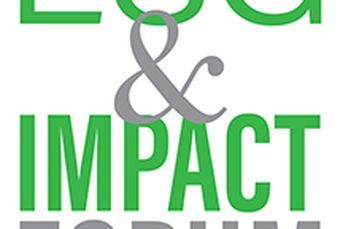Online Platforms Help Advisors Add Alternatives
If there was a single lesson learned by advisors from the worldwide financial crisis in 2008, it was…
If there was a single lesson learned by advisors from the worldwide financial crisis in 2008, it was that a truly diversified portfolio should contain assets with a low correlation to stocks and bonds. Institutions and other ultra-high-net-worth investors have traditionally relied on a variety of alternative investments, including hedge funds, private equity, REITs, and commodities, to fill this need. In recent years advisors have also begun exploring these vehicles to give their clients some measure of downside protection when the traditional markets are in turmoil.
According to the recent McKinsey report Thriving in the New Abnormal, global growth in alternatives continues to outstrip that of traditional assets.1” The report also noted that the compound annual growth rate for alternatives between 2005 and 2015 was 7.9% vs. 5% for traditional assets and goes on to say that the alts boom is likely to be one of the richest asset management growth opportunities in the years to come. 2
McKinsey expects significant growth in areas that offer predictability and scalability of returns, real assets (e.g., infrastructure) in particular.
Historically alternatives have been limited to accredited investors but primarily used by endowments, pension funds and the wealthiest of families. Average minimum investments of $1million or more and a lack of liquidity for an extended period has until recently kept many alternative strategies out of the reach even of most high-net-worth investors.
In the last few years alternative asset managers with excess capacity now offer a wide range of alternative strategies to retail investors through ’40 Act mutual funds and ETFs. While the availability of these liquid alternatives has grown dramatically in the last decade—from 132 liquid alts funds managing $32.6 billion to 484 funds today accounting for some $171.6 billion—they present the same problems as any other publicly-traded fund, including a lack of transparency in terms of holdings and the possibility of manager style drift when the going gets tough. 3
Fortunately for advisors who want to add alternatives to client portfolios without losing control there is now a third option—alternative investment platforms made possible through the equity crowdfunding provisions of Title II and Title III of the Jumpstart Our Business Startups (JOBS) Act.
Title II allowed early-stage companies to raise capital by directly soliciting accredited investors. The technology underlying the development of online “equity crowdfunding sites” makes it possible for investors to discover, research, and participate in investments that were previously unavailable. And by allowing multiple accredited investors to put their money together the cost of entry for each investor is much lower.
Not only are investment minimums lower, these platforms provide access to different types of alternatives that previously would only be available to institutional investors or ultra-high-net-worth families. Rather than hoping for an introduction from someone they know to get in on an alternative investment deal, accredited investors, or their advisors, can visit any number of platforms and review as many as 20 potential deals in the time it would have taken for a single meeting in the past.
Although technology simplifies the research and selection, once an investment has been chosen the advisor’s job is not done since the handling of alternative assets is somewhat more complex than exchange-traded equities, mutual funds or fixed-income instruments. For example, Registered Investment Advisors (RIAs) must comply with the requirements of the amended SEC custody rule. A qualified custodian can provide custody for private funds such as hedge funds or separately-managed accounts (SMAs) that invest in a variety of alternative and traditional assets.
A Full Menu of Alternatives
As stated earlier, the primary goal of adding alternatives to a client’s portfolio is to provide true diversification and a measure of downside protection. Beyond that the advisor and the investor should discuss what the strategy is expected to accomplish. When it comes to alternatives a strategy may be chosen because of its return potential, risk reduction characteristics, or a combination of both. There are numerous choices available, for example:
In the past real estate was primarily a local investment but now advisors and investors can go online—Equity Multiple, PeerRealty, Prodigy Network and RealtyShares are a few of the participating sites—and have access to all kinds of commercial real estate deals located in markets all over the country.
Another investment category gaining traction that is accessible through online platforms is marketplace lending. Platforms like LendingClub, and StreetShares give investors access to various aspects of consumer and small business credit, while LendingRobot acts as an automated investment advisor for peer lending platforms. Glide Capital builds portfolios that provide broad exposure to private credit strategy. Money360 is another platform that sort of hybridizes investing in credit and real estate by offering diversified investment funds comprised of short-duration, high-yield fixed income investments secured by income-producing commercial real estate.
Other specialized platforms might focus on managed futures (e.g. RJ OASIS) or provide exposure to historically hard-to-acess investments like private equity in pre-IPO tech companies (e.g. EquityZen).
There are also multi-strategy platforms that give investors access to private equity, hedge funds, managed futures, real estate and other alternatives. These platforms include iCapital Network, 1000 Angels, and YieldStreet. Each has its own unique offerings but they all make it easy for accredited investors and advisors to do research, conduct due diligence and invest in a range of offerings.
The examples given above are intended only to show the range of offerings now available, but they are in no way intended to be a comprehensive list.
Title III: Wider Access to Startups
The other crowdfunding provision of the JOBS Act, Title III, went into effect June of last year and allows non-accredited investors to participate in startup funding as well, since it eliminates certain requirements about net worth and income. Potentially this provision will open up a whole new pool of capital to up and coming companies. There are some restrictions, one being that companies are limited to raising $1.0 million a year in crowdfunded equity. The companies must also be an LLC or C Corp – not an S Corp or partnership, and a U.S. entity. Ongoing reporting requirements and other restrictions may apply. But the great benefit of Title III is that a large number of investors can now participate in an alternative investment to help diversify their portfolios.
As the demand for alternative investments continues to grow, crowdfunding and online platforms and the financial service providers that support them—like qualified custodians—are working closely to develop key technologies and service solutions to meet the needs of both investors seeking yield and borrowers seeking capital. Together they are essentially building new marketplaces to not only help investors access alternative assets, while addressing regulatory and custody requirements, but also to transform the way entrepreneurs, individuals and companies connect outside of the traditional capital markets.
Gary Anetsberger is the Chief Executive Officer at Millennium Trust Company, LLC. Mr. Anetsberger has over 40 years of extensive experience in the financial services industry.
Millennium Trust Company performs the duties of a directed custodian and, as such, does not provide any investment, tax or legal advice, or perform any due diligence on behalf of account holders or third parties.
1 Thriving in the New Abnormal: North American Asset Management, McKinsey & Company, Nov. 2016, pg. 22.
2 Ibid, pgs. 22-23
3 Investment News “Financial advisers miss the mark by measuring alternative investments against stock market” by Jeff Benjamin, October 12, 2016 (https://www.investmentnews.com/article/20161012/FREE/161019974/financial-advisers-miss-the-mark-by-measuring-alternative)
Learn more about reprints and licensing for this article.






